
Lecture Part II
.pdf
Engraving - Lines are incised on a highly polished metal plate by means of a sharp-pointed instrument, diamond-shaped in cross section, called a burin or graver. The strength of the line may be increased by cutting deeper. The burin is held in a fixed position and, to produce a curved line, the plate itself is turned. This makes engraving a slow and painstaking technique producing controlled, formal results. The careful control required by the cutting method results in a rather stiff, controlled style of image, with shading accomplished through the use of parallel lines, or "hatching."
Jean Daulle, Portrait of Anastasia Ioannovna,
Landgravine of Hesse-Homburg, 1761
Engraving, 576 x 430 mm. The Hermitage, St.
Petersburg
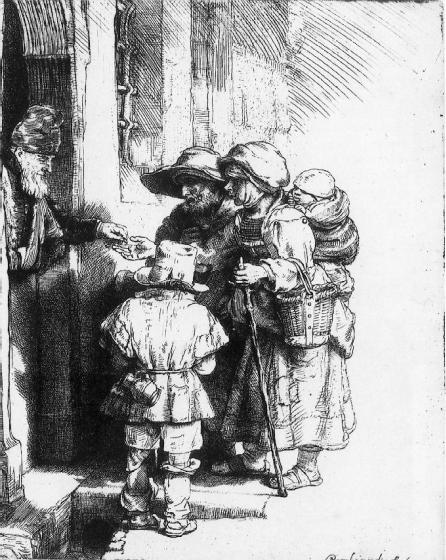
Drypoint - Lines are scratched into the metal plate using any sharp instrument with the same freedom as a pencil. The effect is spontaneous, not formal. The depth of line is controlled by the artist's muscle and experience. The method of cutting produces a ridge along the incisions, called burr. This gives the dry-point line the characteristically soft, velvety appearance absent in the clean edged lines of an engraving or etching.
Rembrandt Harmenszoon van Rijn. Beggars Receiving Alms at the Door of a House, 1648 Etching, burin, and drypoint, 165 x 128 mm.
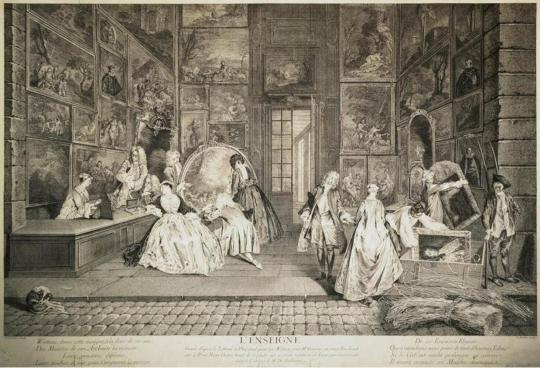
Etching - Lines are bitten into the metal plate through the use of acid. A metal plate is coated with a material called a ground. The artist then draws his design on the ground with a sharp needle, that cuts through the ground to the metal below. When the plate is put in an acid bath, these exposed areas will be etched (or eaten away). This produces the sunken line which will receive the ink. The artist etches on the plate those parts which will appear in the finished print as black or colored areas. Since the ground is soft, the artist is able to work more freely than is possible with engraving, displaying a freer, more relaxed quality of line. The length of time the plate is left in the acid bath will affect the darkness and character of the lines.
Aveline, Pierre-Alexandre.
The Signboard of the Gersaint Gallery, c. 1732
Etching with line engraving, 587 x 865 mm The Hermitage, St. Petersburg
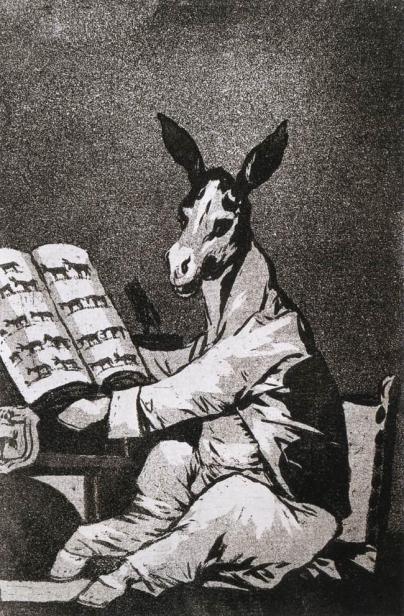
Aquatint - A technique of acid-biting areas of tone rather than lines. A copper plate is protected by a powdered ground that is melted onto the surface of the plate. It is acid resistant, but covers incompletely, resulting in a grainy surface texture. The longer the plate is left in the acid bath, the darker and heavier the texture will become. It is usually combined with a standard etching ground that permits lines and clear white areas as well. The final effect is an image on a fine pebbled background. Aquatint is usually employed in combination with line etching when subtle value gradations are desired.
Goya Y Lucientes, Francisco de. As far back as his grandfather, 1797-98 Aquatint, 215 x 150 mm
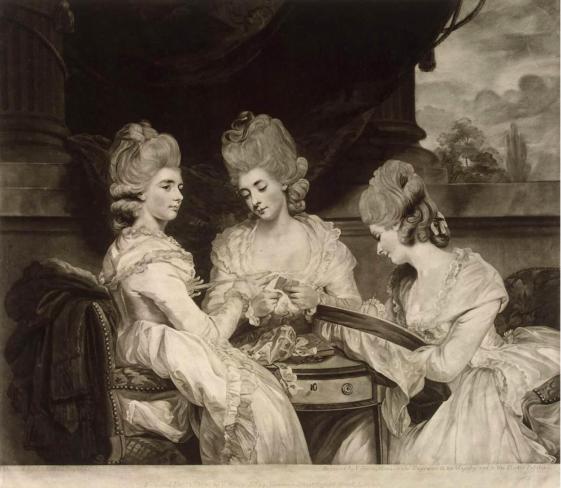
Mezzotint - The only intaglio technique that proceeds from dark to light rather than the opposite. The metal plate is totally abraded with an instrument called a rocker. Were it inked and printed at this point, it would produce an even, rich black. The design, in areas of tone rather than lines, is produced entirely by smoothing areas of the plate with a scraper or a burnishing tool. The more scraping and burnishing done, the lighter the area.
Green, Valentine
Portrait of the Ladies Waldegrave, 1781
Mezzotint, 1st state, 545 x 620 mm
The Hermitage, St. Petersburg

Lithography (Planographic Printing)
In planographic printing there is no difference in level between the inked surface and the non-inked surface. Lithograph is a planographic technique in which the artist draws directly on a flat stone or specially prepared metal plate (usually with a greasy crayon). The stone is dampened with water, then inked. The ink clings to the greasy crayon marks, but not to the dampened areas. When a piece of paper is pressed against the stone, the ink on the greasy parts is transferred to it. The final print showing neither a raised nor embossed quality but lying entirely on the surface of the paper. The design may be divided among several stones, properly registered, to produce, through multiple printings, a lithograph in more than one color.
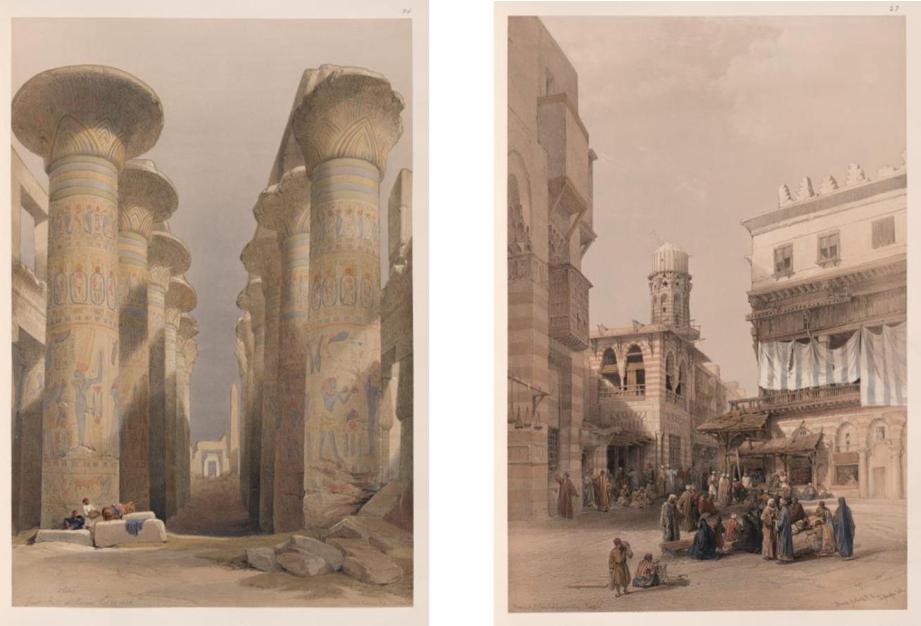
David Roberts. Thebes. Great Hall at Karnak. |
|
Nov. 28, 1838. [Central avenue of the Great |
David Roberts. Bazaar of the coppersmiths, |
|
|
Hall of Columns, Karnak.] (1846-1849) |
Cairo. (1846-1849) |
|

Stencil prints: Silk screen is a type of stencil. This technique first came into use in the early XXth century. The artist prepares a tightly stretched screen, usually of silk, and blocks out areas not to be printed by filling up the mesh of the screen with a varnish-like substance (or any number of other materials which would block up the pores of the fabric). Paper is placed under the screen and ink forced through the still-open mesh onto the paper. This technique is also widely used on textiles, including the ever-popular T-shirt. Robert Rauschenberg and Andy Warhol are examples of artists that used silkscreen.
Andy Warhol. Orange Marilyn, 1962. Synthetic polymer and silkscreen inks on canvas, 50 x 40.5 cm.
Andy Warhol. Silver Liz, 1963. Synthetic polymer paint, silkscreen inks and spray enamel on linen, 101.5 x 99.7cm.
